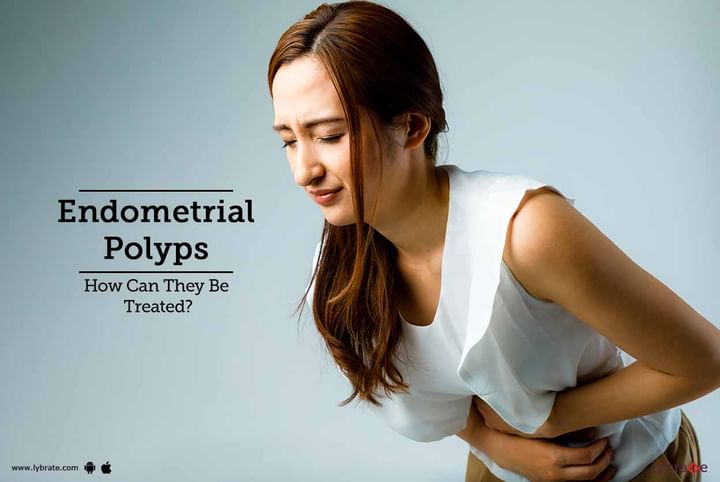Endometrial Polyps - How Can They Be Treated?
Indications:
- Primary Infertility
- Secondary Infertility
- Investigating & treating a case of B.O.H.
- Investigating & treating Abnormal bleeding P/V
- Investigating & treating case of mass inside the uterine cavity
Diagnosis:
Confirmed by TVUSG as typical shadow towards endometrial linings. SOL/polyp can also be better visualized by Sono-salpingography by introducing 10-50 cc of normal saline with pediatric Foley’s catheter inside uterine cavity during TVUSG to delineate endometrial polyp better.
Objective:
Hysteroscopy is the commonest type of work up in the entire Infertility & BOH patient along with Diagnostic Laparoscopy. Only diagnostic hysteroscopy is the commonest work up recommended before IVF. We record Hysteroscopy diagnostic & operative procedure for future important record in Infertility patient, for second opinion & for deciding future treatment protocol.
Benefits of Hysteroscopy Surgery:
- Shorter Hospital stay.
- Earlier return to your routine work.
- Cosmetically no scar on abdomen.
- Less pain after operation.
- Best fertility enhancement & Fertility results following hysteroscopy
- Video-live operative file available in CD/DVD for future reference (Transparency about surgical procedure).
- Patient discharged within 2-4 hours after procedure.
- Patient can resume to her normal routine work within 12-24 hours after the procedure.
Pre-operative Check Lists:
- Lab. Investigation for Surgery (Urine complete & Blood complete, HbsAg, HIV, R.B.S.Etc.); Pelvic Trance vaginal USG report.
- Specific Investigations for Infertility (Endocrine, Blood, Genetic, Husband’s Semen report etc. If The couple is infertile) and repeated pregnancy loss (BOH)
- Operation planned from 4th to 10th day of Menstrual Cycle.
- Preparation of local parts.
No. Of Cuts on Abdomen: Nil
Average Stay in Hospital:
2 to 4 hours. (DAY CARE SURGERY)
Average Duration of Surgery:
- 2 to 10 minutes
- Average Blood loss during Surgery:
- Negligible
Average time after operation to resume normal activities/work:
Within 12-24 hours.
Anesthesia:
General Anesthesia (Patient will not feel any pain in Operation Theatre during surgery)
Procedure:
Patient is given general anesthesia. Patient is put on lithotomy position. Local parts cleaning & paintings with antiseptic solution & draping are done. After P/V examination cervix is checked with uterine sound.
Hysteroscopy requires distention of the uterine cavity with Normal saline to create working space inside the uterine cavity and flushes both fallopian tubes with high pressure fluid also helps in achieving very good fertility enhancing results following Hysteroscopy in infertility patients.
First Diagnostic hysteroscopy is done after removing the air from sheath & hysteroscope (varsascope/1.9 mm/ 2.9 mm) assembled. Hysteroscopy along with irrigation of Normal saline is introduced inside the cavity. Systemically both corneal openings, cavity, both lateral walls and anterior & posterior wall of the uterine wall is noticed for any lesions or normalcy.
For endometrial polyp, hysteroscopic sheath is introduced & cervix is dilated up to 7mm / 10 mm for introduction of Operating hysteroscopic sheath or resectoscope for operative hysteroscopy. Endometrial polyp is cut with 6F scissor from the respective wall of the uterine cavity & sends for HPE. Both cornual ends & hemostasis checked.
Post-operative Course:
Patient remains drowsy/sedated for 1-2 hours after hysteroscopy but conscious & pain free. Patient can take fluids 1-2 hours after hysteroscopy & light food after 2-4 hours. She may feel little discomfort after hysteroscopy for 6-8 hours but it can be relieved with pain killer tabs. Most of the patients can walk normally without support and can take normal diet 6-8 hours after the hysteroscopy. She can be discharged on the same day of the operation. Few patients may feel nausea & vomiting after hysteroscopy, which can be very well controlled with injection in post-operative room. Patient can do her normal activity within 12-24 hours after hysteroscopy. Patient is advised to take antibiotics & analgesic tabs for 5 days following hysteroscopy. Patient is advised to report to doctor for severe pain or bleeding or fever in postoperative period (Day-1 to Day-5) immediately. Patient is advised to come for follow up 7 days after the next period or on the day for IVF protocol & preparation for IVF. In case you have a concern or query you can always consult an expert & get answers to your questions!



+1.svg)
